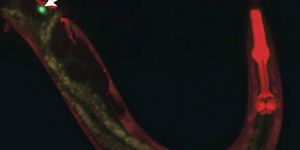Powering Smart Contact Lenses with Tears
A team of researchers at Nanyang Technological University in Singapore have designed a new type of battery that could be used to power smart contact lens and change how eye and various other health conditions are diagnosed and managed. The new battery is described in a recent article published in Nano Energy.
Smart health devices in general have emerged has a revolutionary change in healthcare, including how people diagnose, monitor, and even treat various health conditions. Devices like smart watches enable people to monitor important vital signs, such as heart rate. Others enable people to monitor blood pressure and blood glucose levels, such as for people with diabetes. These devices enable people to communicate important health information to their providers to help keep track of their health.
Smart contact lenses have emerged as one such tool that could be used to help monitor a person’s health. However, contact lenses are not like other smart devices and wearables, such as a wrist watch. They are attached to a very sensitive organ with a unique set of needs. Contact lenses in general must be very thing; however, this poses an important problem: how do you power something so small? After all, a battery can’t be easily attached to a contact lens, which could risk exposing the eye to material that could cause harm. Researchers may have come up with a solution. To solve this problem, researchers have designed a battery powered by something already present in the eye: tears. This approach prevents the need for common battery powering tools like electrodes or coils. When tested on a simulation of an eye, researchers have been able to show the battery can produce up to 200 microwatts of power.
The device uses a glucose oxidase coating that creates energy when it comes into contact with sodium and potassium, both of which are present in tears. And when the contact lens isn’t worn, soaking it in saline solution can help charge it.
Sources: Medgadget; Nano Energy








